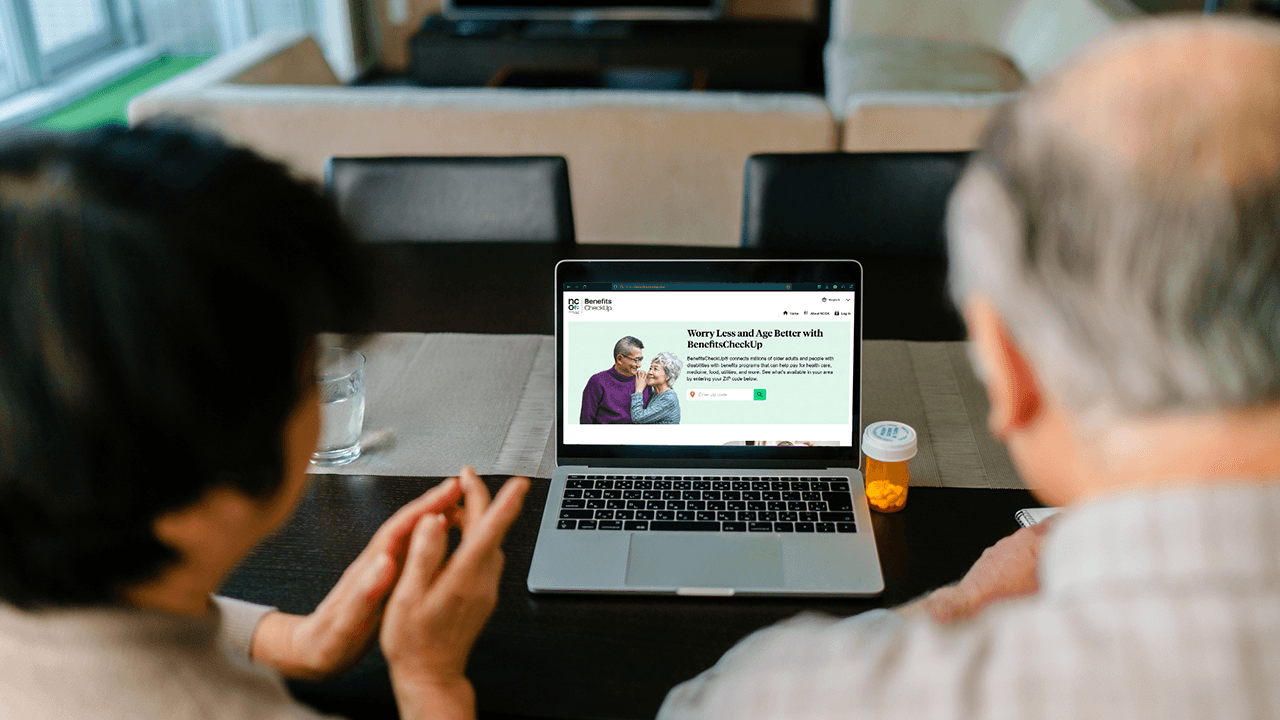How Access to Affordable Transportation Leads to Better Health Outcomes for Older Adults
3 min read

Related Topics
Whether you have your own car, or rely on public buses and trains, having a reliable source of transportation is a major part of independent living. It’s especially important for older adults who may find it harder to drive safely as they age due to vision or mobility issues. But having access to transportation services isn’t just about independence—it’s essential to maintaining your overall health and well-being.
Barriers to transportation mean missed medical appointments, which can lead to gaps in preventive medical care. Out of over 3 million older adults living in urban U.S. areas, 20% relied on public transportation for medical appointments, but they were less likely to use public transportation depending on how frail they were and if their neighborhood had more broken sidewalks, according to a 2022 Journal of the American Geriatrics Society study.1 Older adults who used public transit more recently were also more likely to be cash-strapped.1
Additionally, older adults who aren’t able to secure rides to social events can feel isolated from their communities, which puts them at risk for depression and cognitive decline. In a 2019 study sponsored by rideshare company Lyft in which 150 older adults had free rides for three months, 90% of participants reported a better quality of life, while 66% said they saw a boost in social visits.2
For caregivers of older adults, providing transportation to places such as doctor’s appointments and social events is one of their biggest responsibilities. More than 40% of older adults and younger adults with disabilities get rides from family, friends and neighbors, according to a National Aging and Disability Transportation Center 2021 survey.3
But for older adults who don’t have family or friends to drive them around, there can be additional barriers to finding reliable transportation, such as:4
- Fewer routes in rural and suburban areas
- Expensive fares
- Trouble understanding rideshare technology
- Rides that can’t accommodate mobility needs
How can older adults get help with using transportation services?
Your local public transit agency may offer mobility managers or travel counselors to help you find accessible and affordable options near you, as well as educate you on how to use available transportation.5 Older adults can also find local transportation programs via Rides in Sight, an Independent Transportation Network of America online tool that allows you to search for programs by ZIP code, state and county. Users can also narrow their search to free services and rides that are wheelchair-accessible. NCOA's free, online tool BenefitsCheckUp has partnered with Rides in Sight, offering access to transportation resources, alongside other benefits programs and public assistance that may be available in your area.
What transportation services are out there for older adults?
There are a number of services that are designed to make getting around the community easier and affordable for older adults. Some options may suit their needs better than others, such as:6
- Paratransit: Local public transit agencies offer paratransit rides for people with disabilities who cannot access regular public transportation routes. The pick up and drop off is usually from curb to curb, and a personal care attendant can accompany the rider on the trip. The fare cannot be more than twice the cost of regular transit fare.7
- Reduced public transit fares: Many transit agencies that offer bus, train, and light rail options provide lower fares for older adults after they fill out an application to verify their age.
- Dial-A-Ride: Your city or county may offer a phone number for older adults and people with disabilities to call and schedule rides 1-2 days in advance. Riders may need to register as a user in advance before scheduling rides. Personal care assistants may be able to ride along for free, and the level of help offered to get into the vehicle will vary depending on where you live.
- Medicaid Non-Emergency Medical Transportation (NEMT): Medicaid can pay for transportation to medical appointments, which may include the use of public transportation, taxis, and rideshare vehicles.
- Volunteer transportation: Local organizations may have volunteer drivers whom older adults can plan rides with for free or a small fee. Volunteers may be able to offer extra assistance in getting riders in and out of their homes and a driver’s vehicle.
- Shared ride services: Rideshare companies such as Lyft and Uber allow older adults to create an account and schedule rides on their smartphone at their convenience. The fare will vary based on the time of day and distance they travel. Depending on where they live, riders may be able to request wheelchair-accessible vehicles,8,9 or assistance with getting in and out of vehicles and to the front door.10,11 Health care groups have also partnered with these companies to schedule non-emergency medical transportation to and from medical appointments.12,13
As the use of autonomous or self-driving vehicles continues to grow in cities across the U.S., the technology may have potential as another transportation option for older adults. In a 2021 NCOA and Volkswagen Group of America survey of 2,500 adults age 55 and older, 75% of respondents expect to use self-driving ride hailing technology in the future and 71% said it would help them maintain their independence.
Where can I get help paying for rideshare services?
Older adults who receive Medicare Advantage (known as Part C) can also use their health plan to pay for rideshare transportation. Offered through private insurance, Medicare Advantage offers benefits traditional Medicare does not, such as a Flex Card pre-loaded with money for eligible expenses.14
Uber offers riders the option of using their Flex Card to pay for eligible rides or grocery delivery.15 People can add their Flex Card funds to their Uber account or call 833-873-8237 to pay for eligible rides with their funds.
Sources
1. Journal of the American Geriatrics. Epidemiology of public transportation use among older adults in the United States. September 22, 2022. Found on the Internet at https://agsjournals.onlinelibrary.wiley.com/doi/abs/10.1111/jgs.18055
2. The Journal of mHealth. Health Impacts of Unlimited Access to Networked Transportation in Older Adults. Found on the Internet at https://thejournalofmhealth.com/health-impacts-of-unlimited-access-to-networked-transportation-in-older-adults
3. National Aging and Disability Transportation Center. NADTC Transportation Equity Brief: Caregivers and Transportation. Found on the Internet at https://www.nadtc.org/wp-content/uploads/NADTC_Equity_Caregivers_508.pdf
4. RAND Corporation. Transportation Equity for Older Adults. June 2022. Found on the Internet at https://www.rand.org/content/dam/rand/pubs/perspectives/PEA1600/PEA1615-1/RAND_PEA1615-1.pdf
5. National Aging and Disability Transportation Center. Mobility Management and FTA Section 5310. Found on the Internet at https://www.nadtc.org/wp-content/uploads/3MobilityManagementandFTASection5310-508.pdf
6. Eldercare Locator. Transportation Options for Older Adults and People with Disabilities. Found on the Internet at https://eldercare.acl.gov/Public/Resources/Brochures/docs/TransportationOptions_508_REV_20Sept2018.pdf
7. Federal Transit Administration. Frequently Asked Questions. Found on the Internet at https://www.transit.dot.gov/regulations-and-guidance/civil-rights-ada/frequently-asked-questions
8. Lyft.com. WAV rides. Found on the Internet at https://help.lyft.com/hc/en-us/all/articles/115013081668
9. Uber.com. Uber WAV. Found on the Internet at https://www.uber.com/us/en/ride/uberwav/
10. Lyft.com. Lyft assisted rides for riders. Found on the Internet at https://help.lyft.com/hc/et/all/articles/5792507564-Lyft-Assisted-rides-for-riders
11. Uber.com. Uber Assist. Found on the Internet at https://www.uber.com/au/en/ride/assist/
12. Uberhealth.com. Uber Health. Found on the Internet at https://www.uberhealth.com/us/en/transportation
13. Lyft.com. Lyft Healthcare. Found on the Internet at https://www.lyft.com/healthcare
14. Fortune.com. What is a Medicare Flex card? Get the facts about the flexible benefits card—including where to get one. September 27, 2023. Found on the Internet at https://fortune.com/well/article/what-is-medicare-flex-card
15. Uberhealth.com. Use your flex benefits card on Uber. Found on the Internet at https://www.uberhealth.com/us/en/benefit-card/how-to-use




